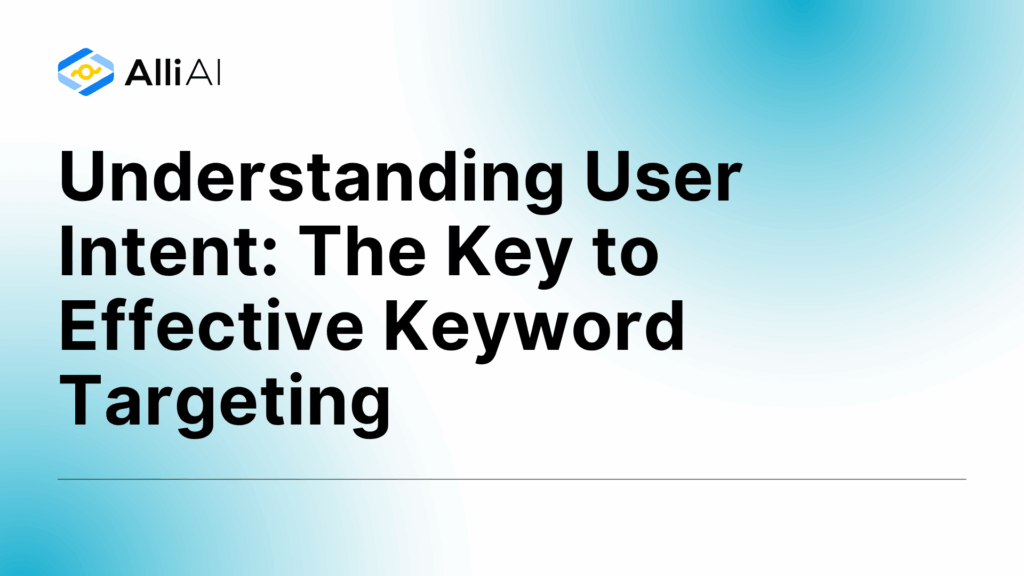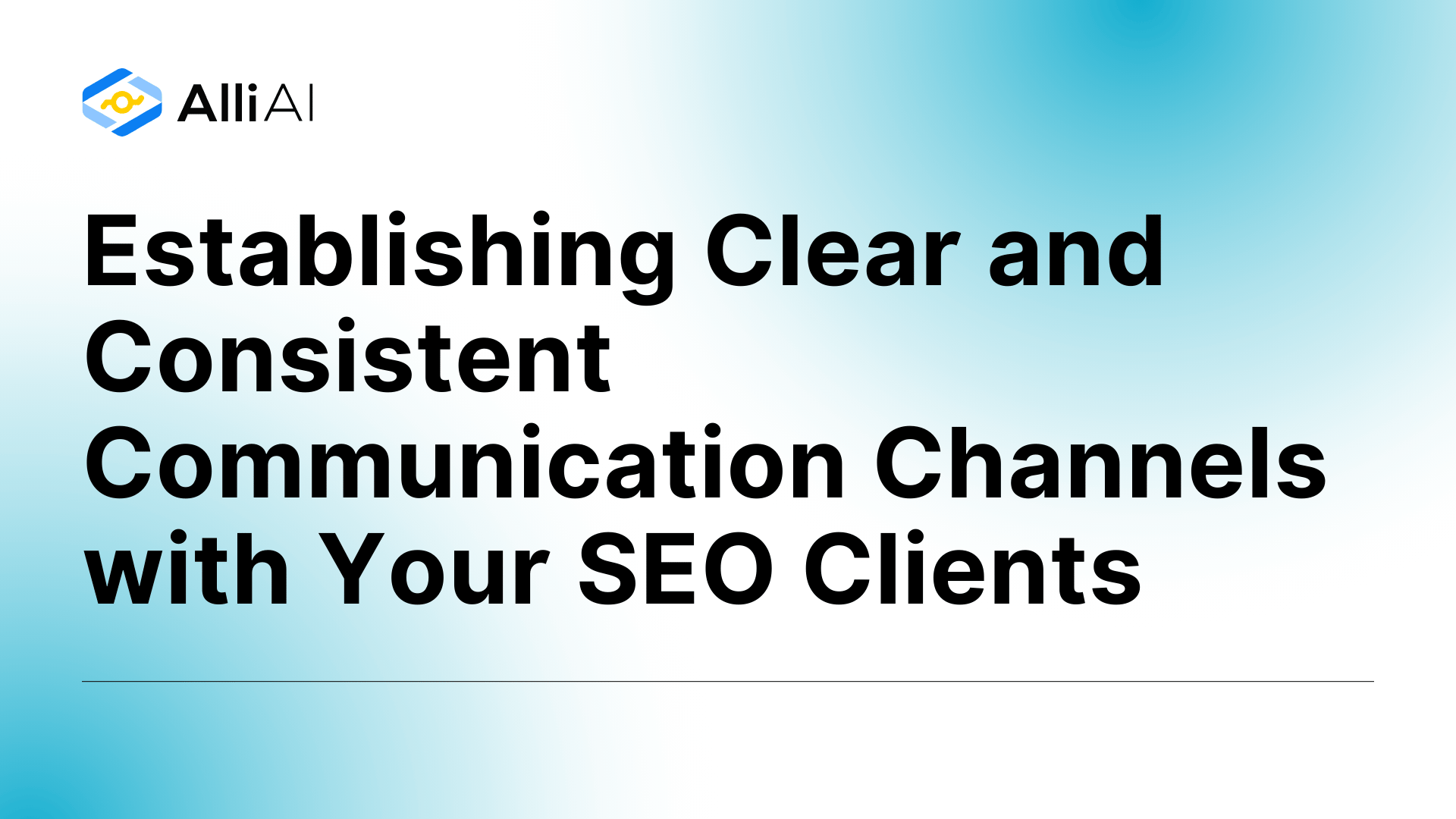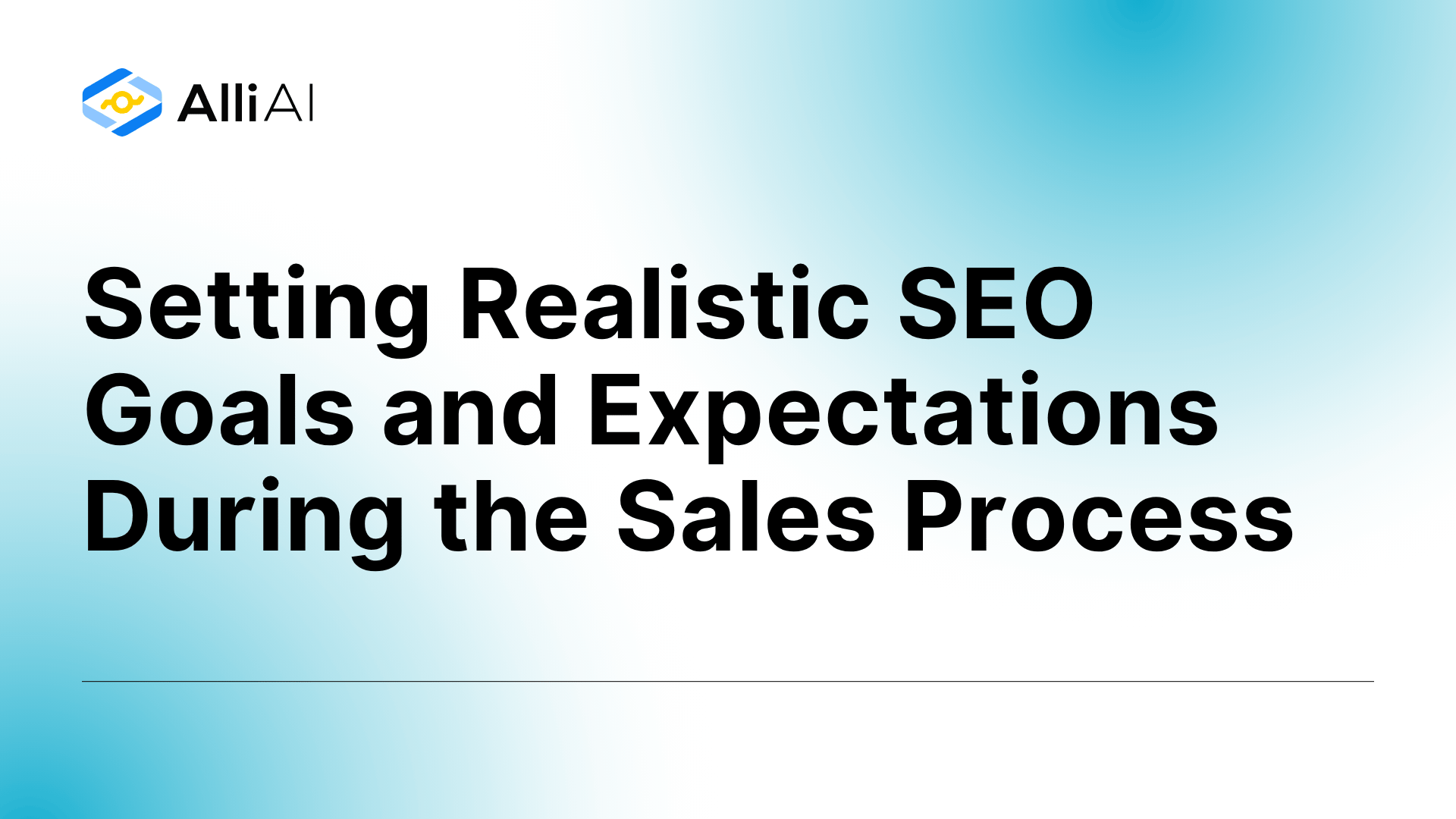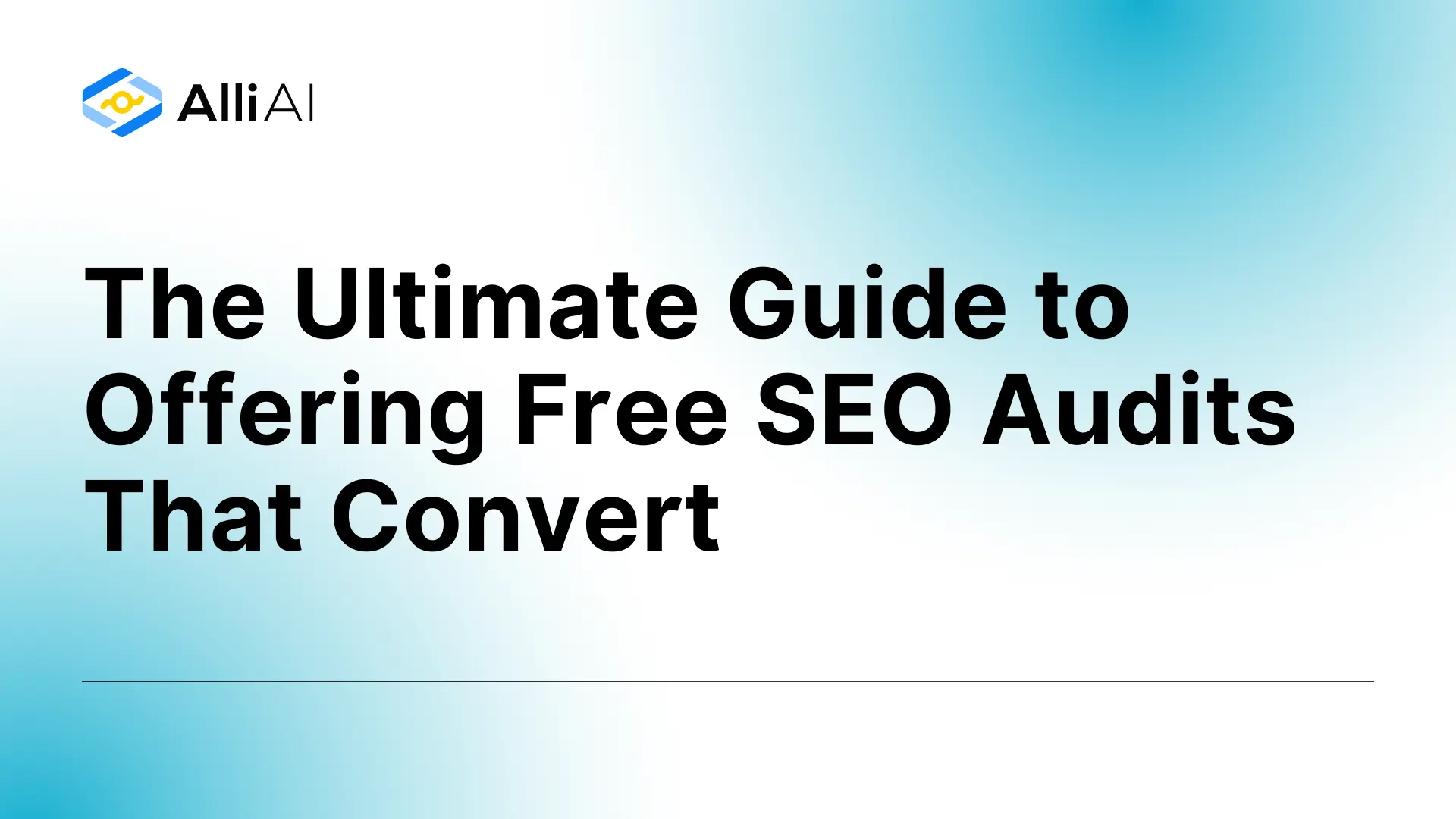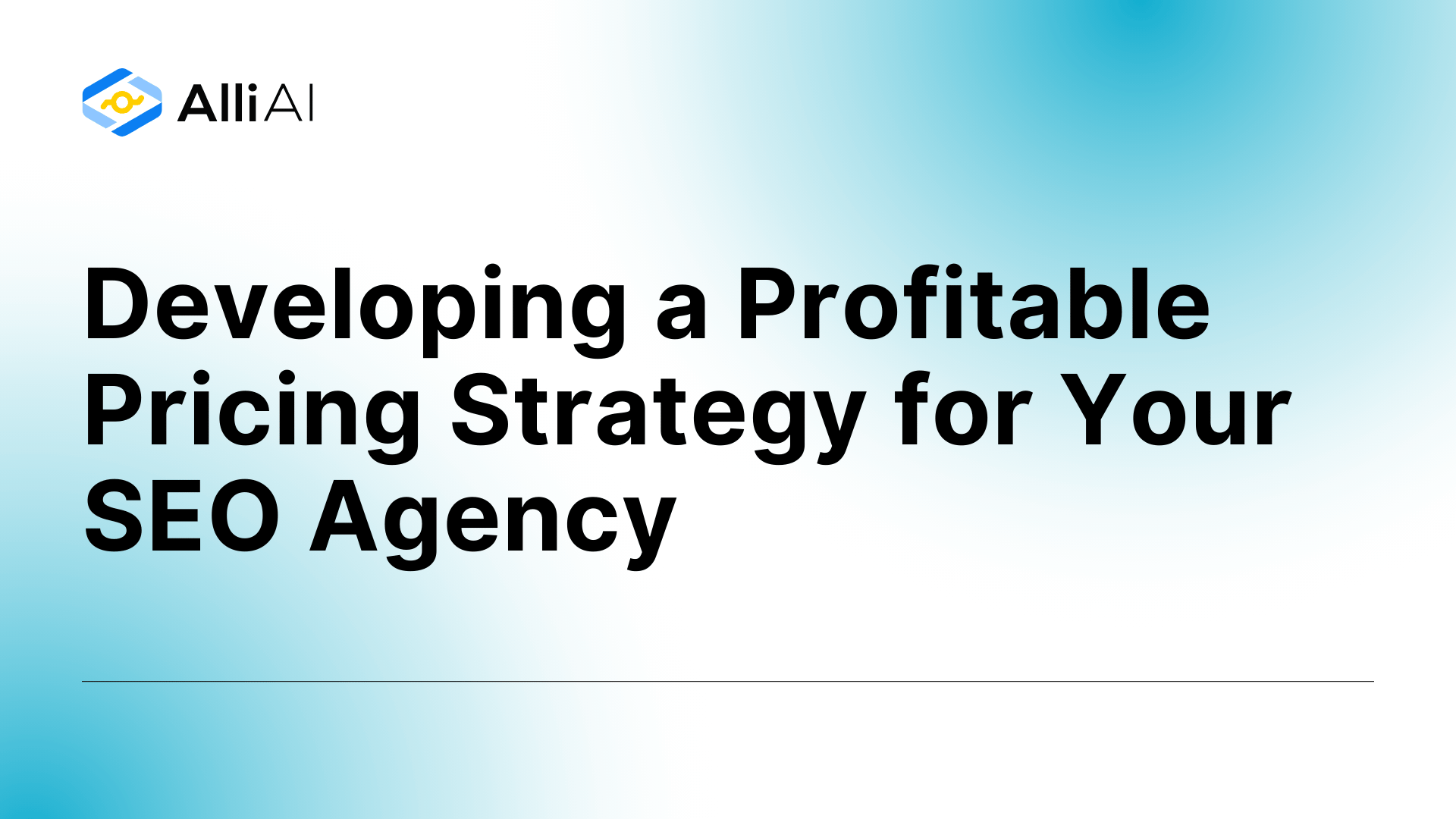Are you struggling to rank despite targeting the “right” keywords? Are you seeing high traffic but dismal conversion rates? Your SEO strategy might be missing the crucial ingredient that separates successful campaigns from failures: user intent alignment.
Let me show you how to transform your keyword targeting approach by putting user intent at the center of everything you do. This isn’t just another SEO tactic—it’s a fundamental shift that has delivered results like 652% traffic increases and dramatically improved conversion rates for businesses that implement it correctly, sometimes with the help of AI SEO automation software.
I’ll walk you through exactly how search engines have evolved to prioritize intent, how to decode what your users really want, and how to create content that satisfies both algorithms and human readers. By the end of this guide, you’ll have a clear blueprint for intent-driven SEO that delivers qualified traffic and genuine conversions.
Step #1: Understand the Inseparable Bond Between Keywords and Intent
Begin by recognizing why keyword targeting without intent consideration is destined to fail.
Search engines have evolved dramatically since the days when keyword density was the primary ranking factor. Since Google’s Hummingbird update in 2013, and particularly with the introduction of RankBrain, BERT, and MUM, the algorithm now works hard to understand why someone performs a search—not just what words they use.
This shift means sustainable SEO success depends on creating an unbreakable connection between your keyword research and user intent analysis. For a deeper dive into understanding user intent, many resources are available. Here’s why this matters:
- Algorithms score relevance AND satisfaction: Pages that deliver what searchers expect earn lower bounce rates, higher dwell time, and better rankings.
- User delight drives business results: When you meet the exact needs signaled by a query, you’ll see higher conversions, improved loyalty, and strengthened brand authority. Understanding how user intent improves conversion rates is key.
- Intent misalignment gets penalized: Modern algorithms explicitly punish keyword stuffing and thin content that doesn’t satisfy the searcher’s goal.
For example: If someone searches “best smartphone cameras 2025,” they’re looking to compare options before making a purchase—not immediately buy a specific model. If your page tries to sell them a phone directly instead of providing comparison information, expect high bounce rates and poor rankings.
Step #2: Decode the Spectrum of User Intent Categories
Map each potential keyword to its primary intent category to guide your content creation.
Before you can optimize for intent, you need to understand the different types of search intent that drive user behavior. While the foundational categories provide a starting point, you’ll need to recognize more nuanced classifications to truly excel.
The Four Core Intent Types:
- Informational Intent – Users want to learn something (“how to bake sourdough bread”)
- Navigational Intent – Users want to find a specific website or page (“Instagram login”)
- Commercial Investigation – Users are researching before purchase (“best DSLR under $1000”)
- Transactional Intent – Users are ready to complete an action (“buy iPhone 15 Pro”)
However, today’s intent landscape is more sophisticated, with additional categories like:
- Local Intent – Users seeking nearby services or locations (“coffee shops near me”)
- Visual Intent – Users wanting to see images or videos (“wedding cake designs”)
- News Intent – Users seeking current information (“latest iPhone release”)
- Educational Intent – Users looking for structured learning (“python programming course”)
Pro tip: Pay special attention to micro-intents within broader searches. For example, someone searching “vegan red velvet cake” might specifically want a quick video recipe under 5 minutes, allergy-friendly options, or nutritional information. Recognizing these nuanced needs allows you to create either highly targeted content assets or comprehensive pillar pages structured to address multiple related sub-needs.
Step #3: Master Practical Methods for Uncovering User Intent
Learn to read the search results like a detective to understand exactly what users—and Google—expect for each query.
The most reliable way to determine intent is to study what’s already ranking. This analysis reveals what Google has determined best satisfies users for any given search term.
Conduct Thorough SERP Analysis:
- Examine organic layout patterns: What content types dominate the top 10 results?
- Product pages indicate transactional intent
- Listicles suggest commercial investigation
- How-to guides signal informational intent
- Identify featured SERP elements: Each special feature indicates specific intent
- Featured snippets → informational content
- People Also Ask boxes → related questions users have
- Image packs → visual intent
- Video carousels → video tutorial demand
- Local packs → location-based intent
- Shopping ads → transactional intent
- AI Overviews → quick answer needs
- Compare across devices and locations: SERPs are personalized, so check mobile vs. desktop results and different geographic locations.
For example: When searching “pizza,” you’ll notice local intent dominates with a map pack of nearby restaurants. But search “how to make pizza dough” and you’ll see recipe pages, videos, and step-by-step guides—clearly informational intent.
Leverage Intent Signals in Query Language:
Certain words and phrases are strong indicators of specific intent types:
- Informational: how, why, guide, tutorial, learn, what is
- Navigational: brand names, login, official site, download
- Commercial: best, top, review, vs, compare, pros and cons
- Transactional: buy, order, purchase, coupon, price, near me
Remember that word order matters significantly: “ingredients for dog food” (someone making homemade dog food) signals very different intent than “dog food ingredients” (someone checking what’s in commercial products).
Use Research Tools Strategically:
While tools like Semrush, Ahrefs, and Moz can provide intent classifications, treat these as initial hypotheses rather than definitive answers:
- Start with tool-generated intent labels
- Note the CPC (cost-per-click) as a proxy for commercial value
- Always validate with manual SERP checks for accuracy
Warning: Never rely solely on automated intent labels—they’re often generalized and miss critical nuances specific to your target audience and industry.
Step #4: Implement Strategic Keyword Selection Based on Intent
Choose keywords that clearly signal the specific intent you’re targeting with each piece of content.
Now that you understand the intent landscape, you need to strategically select keywords that:
- Match the business goals for each page
- Align with the intent category you want to target
- Have sufficient search volume to generate results
Align Keywords with Intent Categories:
For Informational Content targeting:
- Focus on question phrases: who, what, when, where, why, how
- Include educational terms: guide, tutorial, learn, examples
- Consider format-specific searches: infographic, video, PDF
For Navigational Content targeting:
- Combine brand names with page types: “[Brand] login,” “[Brand] contact”
- Include official designation terms: legitimate, official site, homepage
- Target branded product searches: “[Brand] + [Product]”
For Commercial Investigation targeting:
- Incorporate comparison terms: best, top, review, vs, compare
- Add qualifying modifiers: for [specific use case], professional, enterprise
- Include decision stage phrases: pros and cons, alternatives to
For Transactional Content targeting:
- Use purchase terms: buy, order, purchase, shop, price
- Include deal-seeking terms: discount, coupon, sale, promotion
- Add local modifiers: near me, in [location], delivery
For example: If you sell organic skincare products, don’t just target “facial moisturizer” (too broad). Instead, target “best organic facial moisturizer for sensitive skin” (commercial investigation) or “buy fragrance-free organic moisturizer” (transactional).
Pro tip: Long-tail terms with explicit intent signals often deliver better ROI than generic high-volume terms, even with lower search volume, because they attract pre-qualified visitors with clear needs.
Step #5: Craft Content That Perfectly Satisfies Each Intent Type
Design your content format, depth, and structure to meet the exact expectations indicated by your target keyword’s intent.
Different intent categories require fundamentally different content approaches. The perfect format for one intent type could completely fail for another.
Match Content Type to Intent:
| Intent Type | User Goal | Winning Content Formats |
|---|---|---|
| Informational | Learn or solve a problem | How-to guides, tutorial videos, step-by-step instructions, infographics, FAQs |
| Navigational | Reach a specific page | Optimized homepage, login page, contact page, about page |
| Commercial | Compare options before deciding | “Best of” listicles, comparison tables, case studies, expert reviews |
| Transactional | Complete a purchase or action | Product pages, service pages, optimized checkout flows, lead capture forms |
Align Content Depth with Query Specificity:
The complexity and depth of your content should match what users expect based on their query:
- Simple, direct queries require clear, concise answers
Example: “timezone in Tokyo” → quick factual answer - Complex, nuanced queries demand comprehensive guidance
Example: “best EMR software for small psychology practices” → in-depth comparison with multiple considerations
Remember: Don’t overcomplicate simple informational needs, but don’t oversimplify complex decision-making topics either.
Structure Content for Intent Fulfillment:
How you organize your content should reflect the user’s journey for that specific intent:
For Informational Content:
- Begin with a clear, direct answer to the main question
- Follow with comprehensive explanation and supporting details
- Include visual aids that simplify complex concepts
- End with next steps or related information
For Commercial Investigation Content:
- Start with selection criteria and methodology
- Present options in a logical comparison format
- Include specific pros/cons for different use cases
- Conclude with recommendation frameworks
For Transactional Content:
- Lead with clear value proposition
- Address common objections
- Provide specific product/service details
- Include prominent, relevant calls to action
For example: If targeting “how to create a content calendar,” your page should start with a clear definition, list required tools, provide step-by-step instructions with screenshots, offer downloadable templates, and conclude with implementation tips—all elements users expect in a how-to guide.
Step #6: Optimize Every On-Page Element for Intent Alignment
Fine-tune technical SEO elements to reinforce your content’s relevance to the target intent.
Creating great content is just the beginning. To fully capitalize on your intent-matching strategy, you must optimize every on-page element to send clear signals about your content’s purpose.
Essential On-Page Optimization Elements:
- Meta Titles and Descriptions
- Include intent-specific modifiers and action words
- Set accurate expectations about what the page delivers
- Use power words that appeal to the target intent
- URL Structure
- Keep URLs clean, readable, and intent-focused
- Include relevant intent keywords where natural
- Avoid parameter-heavy or dynamically generated URLs
- Heading Hierarchy
- Craft an H1 that clearly addresses the main intent
- Structure H2-H6 tags to guide the user journey
- Include relevant question phrases in subheadings for informational content
- Strategic Call to Action Placement
- Align CTAs with the appropriate funnel stage for that intent
- For informational content: focus on related resources or newsletter signups
- For commercial content: emphasize comparison tools or detailed specifications
- For transactional content: streamline the path to purchase or conversion
- Schema Markup Implementation
- Apply intent-specific schema types:
- HowTo or FAQPage for informational content
- Product or Review for commercial/transactional pages
- LocalBusiness for location-based intent
- VideoObject for video tutorials
To simplify this, an AI schema markup generator can be invaluable.
- Internal Linking Strategy
- Create logical next steps based on intent
- Guide users through the marketing funnel with strategic links. Consider tools for AI internal linking automation to streamline this process.
- Link to related content that addresses secondary intents
For example: A page targeting “best wireless headphones 2025” should use schema markup for product reviews, include comparison tables with specifications, and provide internal links to both detailed individual product reviews and purchase pages.
Pro tip: For informational content, consider adding a Table of Contents with jump links to help users navigate directly to specific sections that address their micro-intents.
Step #7: Measure and Refine Your Intent Alignment Strategy
Use performance data to validate your intent assumptions and continuously improve your targeting approach.
Even with thorough research, your initial intent targeting hypotheses need validation through real-world performance data. A comprehensive guide on User Intent Analysis for SEO can provide further insights into this process. Establish a systematic process to measure success and refine your approach.
Key Metrics to Track by Intent Type:
Informational Content Metrics:
- Time on page
- Scroll depth
- Related page views
- Newsletter signups
- Resource downloads
Commercial Investigation Metrics:
- Comparison tool usage
- Product page visits after reading
- Return visits before conversion
- Clicks on affiliate links
- Engagement with interactive elements
Transactional Content Metrics:
- Conversion rate
- Add to cart actions
- Form completions
- Checkout initiations
- Call or contact actions
Create an Intent Optimization Loop:
- Monitor behavior signals that indicate intent satisfaction:
- Low bounce rate suggests intent alignment
- High CTR indicates appealing SERP presentation
- Long dwell time shows engaging content
- Conversion actions confirm value delivery
- Identify misalignment warnings:
- High bounce rates from organic traffic
- Low engagement with expected conversion points
- “Pogo-sticking” back to search results
- Strong traffic but poor conversion metrics
- Implement targeted refinements:
- Restructure content to better match user expectations
- Adjust headings and introductions to clarify intent alignment
- Modify CTAs to match the appropriate funnel stage
- Add content elements to address unfulfilled micro-intents
For example: If your “how to fix a leaking faucet” guide has high traffic but users aren’t engaging with your plumbing service CTAs, you might need to add content segments addressing when DIY fixes aren’t appropriate, or include more visual demonstrations that build trust in your expertise.
Warning: Fail to measure and refine your intent strategy, and you won’t maintain rankings even if you initially succeed — intent patterns shift over time, and your content must evolve accordingly.
Step #8: Future-Proof Your Intent Strategy for Algorithm Evolution
Adapt your approach to stay aligned with Google’s increasingly sophisticated understanding of user intent.
Search engines continue to evolve their intent-detection capabilities. Understanding this trajectory helps you build a durable strategy that withstands algorithm updates.
Key Algorithm Developments Affecting Intent:
| Algorithm Update | Core Change | Intent Implication |
|---|---|---|
| 2013 – Hummingbird | Semantic search | Context matters more than exact keywords |
| 2015 – RankBrain | Machine learning | User satisfaction signals influence rankings |
| 2019 – BERT | Natural language processing | Nuance and query context better understood |
| 2021 – MUM | Multimodal understanding | Cross-language and multi-format intent recognition |
| 2024 – AI Overviews | SERP summaries | Simple informational queries answered directly |
Build Intent Resilience Through:
- Topic Authority Development
- Create comprehensive content clusters around core topics
- Demonstrate E-E-A-T (Experience, Expertise, Authoritativeness, Trustworthiness)
- Cover topics at multiple levels of complexity
- Value Beyond AI Summaries
- Provide unique insights AI can’t generate
- Offer original research, expert opinions, and proprietary data
- Create interactive tools that deliver personalized value
- Intent Drift Monitoring
- Track seasonal intent shifts (10-12% change annually)
- Watch for technology or industry changes that alter search behavior
- Regularly audit top-ranking content for format and approach changes
- Conversational and Voice Search Optimization
- Use natural language patterns in content
- Address direct questions with clear, concise answers
- Structure content to serve both detailed and summary needs
For example: If you target “small business accounting software,” don’t just create a product comparison page. Build a comprehensive resource center with beginner guides, advanced tutorials, industry-specific considerations, original research on adoption patterns, and interactive tools for requirement analysis—demonstrating expertise that AI overviews can’t replace.
Pro tip: When targeting informational queries, create unique value by including original insights, proprietary data, or expert opinions that go beyond what AI can summarize from existing sources.
Your Actionable Intent Mastery Blueprint
Now that you understand how to align keywords with user intent, it’s time to implement these strategies consistently across your SEO workflow. By embedding intent analysis at every stage, you’ll create content that genuinely satisfies both search engines and users.
Begin by implementing these intent-driven practices:
- Classify every target keyword by intent before creating content
- Analyze the SERP layout and features for each query
- Select content formats and structures that match intent patterns
- Optimize all on-page elements for intent alignment
- Implement schema markup relevant to your target intent
- Provide value beyond what AI summaries can offer
- Track engagement metrics segmented by intent category
- Regularly audit and update content as intent patterns shift
Remember that intent-driven SEO isn’t just about better rankings—it’s about creating genuine connections with your audience by delivering exactly what they need at each stage of their journey. When you truly understand and serve user intent, you transform from simply chasing keywords to becoming an invaluable resource that earns both visibility and trust.
The most successful SEO strategies of the next decade will be built on this foundation: understanding not just what words people type, but why they’re searching and what would genuinely satisfy their needs. Master this approach, and you’ll build sustainable search visibility that converts visits into valuable business outcomes.
Are you ready to transform your SEO strategy with user intent at its core? Start by analyzing your current top-performing pages for intent alignment, then apply these principles to revitalize underperforming content. The results will speak for themselves: higher rankings, more qualified traffic, and dramatically improved conversion rates.
Quick-Start Intent Optimization Checklist
Before publishing any content, ensure you’ve completed these essential steps:
Identified the primary and secondary intent behind your target keyword
Analyzed top SERP formats, features, and schema implementation
Selected the appropriate content type and structure for the target intent
Crafted intent-aligned meta titles and descriptions
Implemented relevant schema markup
Placed clear CTAs appropriate to the intent’s funnel stage
Set up tracking for intent-specific engagement metrics
Follow this process consistently, and you’ll create content that aligns perfectly with both Google’s increasingly intelligent algorithms and your audience’s genuine needs—positioning your site for sustainable search success now and in the future.
